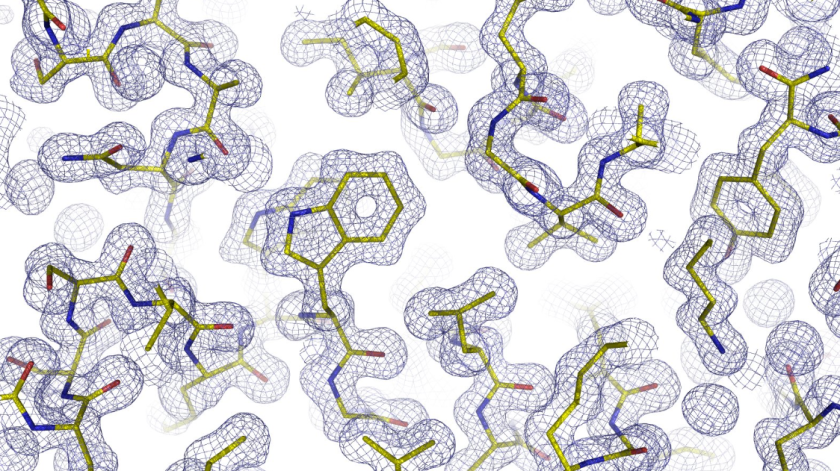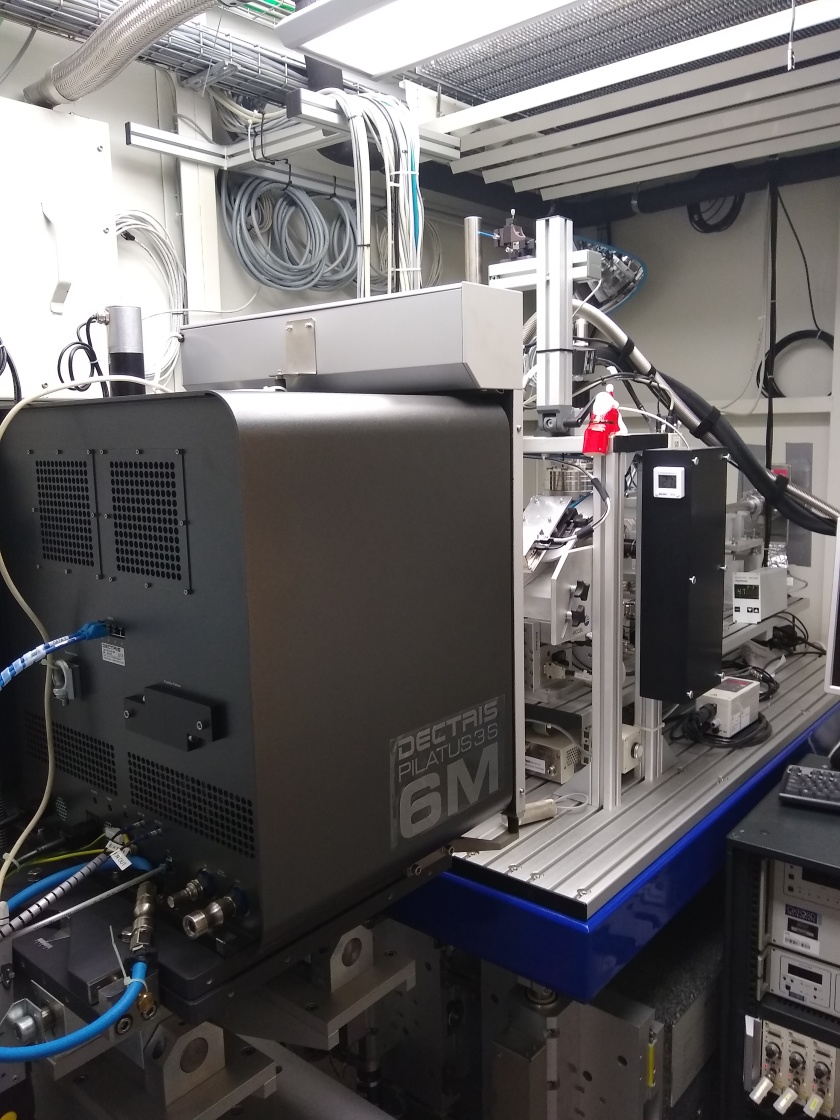New detector accelerates protein crystallography

60s on the new detector were sufficient to obtain the electron density of the PETase enzyme. © HZB

The MX-beamline 14.1 has been upgraded with a new, better, faster and more sensitive PILATUS-detector.
© HZB
Last week a new detector was installed at one of the three MX beamlines at HZB. Compared to the old detector the new one is better, faster and more sensitive. It allows to acquire complete data sets of complex proteins within a very short time.
Proteins consist of thousands of building blocks that can form complex architectures with folded or entangled regions. However, their shape plays a decisive role in the function of the protein in the organism. Using macromolecular crystallography at BESSY II, it is possible to decipher the architecture of protein molecules. For this purpose, tiny protein crystals are irradiated with X-ray light from the synchrotron source BESSY II. From the obtained diffraction patterns, the morphology of the molecules can be calculated.
Now the MX team at BESSY II has put a new detector into operation at the MX beamline 14.1, which works about 2 to 3 times faster than before. The team analysed a crystal from the enzyme PETase as a sample. PETase does partially degrade the plastic PET. In less than a minute, the detector was able to record a complete diffraction data set, which includes data from an angular range of 180 degrees. The data set consists of 1200 images, each of which was exposed to X-rays for 45 milliseconds. "The resulting electron density was of excellent quality and showed all structural features of the enzyme," explains Dr. Manfred Weiss, who leads the MX team at BESSY II.
The success of the HZB MX beamlines is documented by more than 3000 PDB entries from experimental beamtime from more than a hundred international user groups from academia and pharmaceutical research companies.
red.
https://www.helmholtz-berlin.de/pubbin/news_seite?nid=21100;sprache=en
- Copy link
-
The twisted nanotubes that tell a story
In collaboration with scientists in Germany, EPFL researchers have demonstrated that the spiral geometry of tiny, twisted magnetic tubes can be leveraged to transmit data based on quasiparticles called magnons, rather than electrons.
-
Ernst Eckhard Koch Prize and Innovation Award on Synchrotron Radiation 2025
At the 27th BESSY@HZB User Meeting, the Friends of HZB honoured the dissertation of Dr Enggar Pramanto Wibowo (Friedrich-Alexander University Erlangen-Nuremberg). The Innovation Award on Synchrotron Radiation 2025 went to Prof. Tim Salditt (Georg-August-University Göttingen) and Professors Danny D. Jonigk and Maximilian Ackermann (both, University Hospital of RWTH Aachen University).
-
Bright prospects for tin perovskite solar cells
Perovskite solar cells are widely regarded as the next generation photovoltaic technology. However, they are not yet stable enough in the long term for widespread commercial use. One reason for this is migrating ions, which cause degradation of the semiconducting material over time. A team from HZB and the University of Potsdam has now investigated the ion density in four different, widely used perovskite compounds and discovered significant differences. Tin perovskite semiconductors produced with an alternative solvent had a particular low ion density — only one tenth that of lead perovskite semiconductors. This suggests that tin-based perovskites could be used to make solar cells that are not only really environmentally friendly but also very stable.
